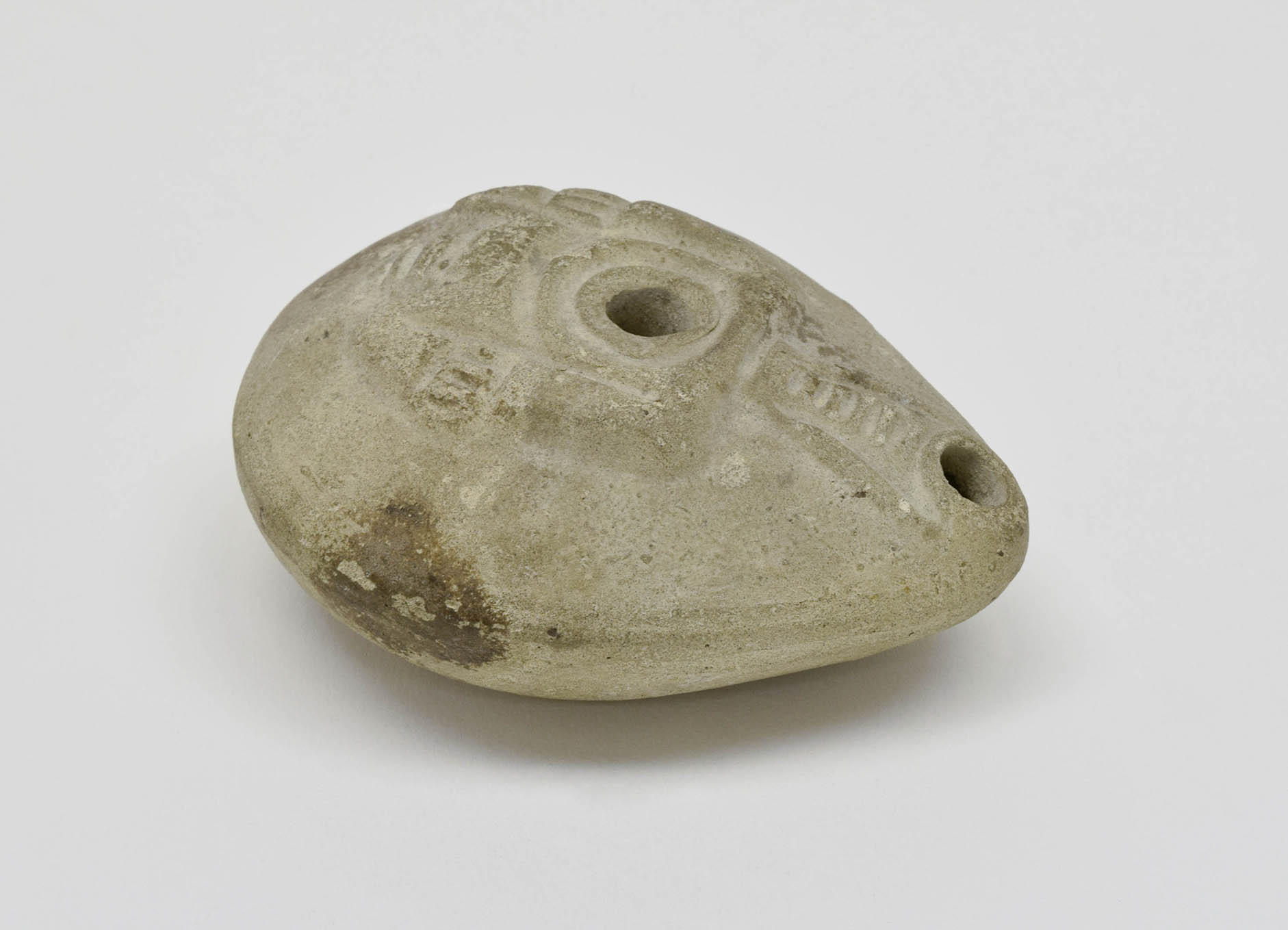Oil Lamp
Judaean, probably 1st century CE, found at HUC Jerusalem campus, 1961
Clay, l. 8.2 x h. 3.6 in.
Cincinnati Skirball Museum, gift of Dr. Helen Glueck, A/776
The Skirball Museum’s permanent collection includes an important group of archeological
materials from biblical and later historical periods that illuminate and contextualize early Jewish
life. Among these are a group of oil lamps that reflect a variety of increasingly sophisticated and
decorative approaches to the design of an object that was ubiquitous in the ancient world.
As techniques for working and decorating clay developed, so did the shapes and decoration of
utilitarian oil lamps. Called Herodian lamps, they were made until the Bar Kokhba revolt in 132
CE. Probably produced in Jerusalem or elsewhere in Judea, these wheel-made lamps are
characterized by a central opening surrounded by a rim for filling with oil and a spout for the
wick. The upper, convex part of the lamp is decorated with a motif, in this case a building with
three towers and a stairway leading to the central opening, which takes the place of a doorway to
the building.

